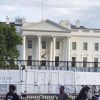As the United States isolates itself fighting trade wars around the world, China, the second-largest economy in the world, is expanding its influence around the world. Sitting more than 10 thousand miles away from Latin America, Beijing has recently become the primary trading and economic partner of Brazil, Argentina, Chile, Peru, Ecuador, Uruguay, and soon, Colombia, the United States’ closest ally in South America.
The United States is Colombia’s largest trading partner, making Colombia the only country in South America for which the U.S. is both its top import origin country and export destination. In 2019, Colombian exports to the U.S. approached 10 billion dollars, and it imported nearly 13 billion from the U.S. The economic relationship between the two countries is linked with decades of U.S. interest in Colombia’s geopolitical importance; under the ‘Plan Colombia’ today called ‘Paz Colombia’, the U.S. has financed Colombia’s war on drugs for the past 20 years, delivering more than 10 billion dollars in military equipment, counter-narcotics, and intelligence. Colombia has also been an essential ally given the waves of leftist governments in the region over time, and Venezuela’s threatening ties to Russia, Iran, China, and other international criminal organizations such as Hezbollah.
Yet despite its economic and geopolitical relevance, America’s direct investments and trade relationship with Colombia has begun to stagnate. U.S. Foreign Direct Investment in Colombia decreased in 2016 and 2017 by US$508 and US$66 million respectively, and it increased in the past two years to average levels of US$312 per year. Meanwhile, Chinese investment in Colombia has increased moderately but steadily over the past ten years, reaching 31.5 million dollars in 2018. Just in the past four years, China went from having 20 companies in Colombia to 80, as highlighted by the Chinese Ambassador to Colombia, Xu Wei.
Chinese infrastructure companies have made inroads into some of the most economically and politically important transport infrastructure projects in Colombia. In October, the consortium of China Harbour Engineering Company Limited (Chec) and Xi’An Metro Company Limited won a 12-billion-dollar contract to build Bogotá’s long-awaited metro system, the largest planned infrastructure project in the Andean country with the potential to create thousands of local jobs. Currently, Chinese infrastructure firms are building a 4G highway that reduces the travel time from Medellin to the Atlantic Ocean by at least 5 hours, expanding the city’s connectivity. Moreover, Chinese company BYD Co. sold 64 electrical buses to Medellin, while the Sunwin Bus Corporation sold another 26 buses to Cali, Colombia’s third-largest city. Yutong, the largest producer of coaches in the world, is the most optioned company to win a multimillion-dollar contract to supply electric buses to Bogotá’s Integrated System of Public Transportation.
Chinese firms are also increasingly financing solar and renewable energy projects around the country: the part-Chinese owned EDP- Energias de Portugal recently purchased two wind energy projects in the northern region of La Guajira. Sinopec, the largest Chinese state-owned company, operates now 14 oil and gas camps in the country and its exploring in other regions. In 2020, Sloane Energy will start building a thermoelectrical plant in Cesar region. But beyond energy and infrastructure, Huawei increased its market presence in the country and now sells 26% of the cellphones in the country. Didi, Uber’s competitor, has 20,000 registered drivers, and ZTE just recently agreed to sells hundreds of video cameras to the national government.
China’s growing foreign influence is, of course, propelled by the Belt and Road Initiative (BRI), through which the country invests in multimillion dollar projects in infrastructure, energy, mining, and agriculture. According to the OECD, Chinese trade flow in Latin America was approximately 500 billion dollars from 2015 – 2019, and its foreign direct investment topped 250 billion. The Inter-American Dialogue’s Asia & Latin America Program estimates that Beijing has loaned nearly 140 billion dollars to Latin America since 2005. 90% of those loans have gone to Venezuela, Brazil, Argentina, and Ecuador. Strinkingly, in recent years, these loans surpass what the World Bank, the IMF, and the CAF combined have loaned to South American countries, highlights Octaviano Canuto, former vice-president and executive director at the World Bank
However, not all are convinced that this growing surge of Chinese investment is positive. Of the150 infrastructure projects the Chinese expressed interest in Latin America since 2002, only half of them have started construction phases. Other examples in Bolivian highway of El Sillar and Mexico’s, Querétaro railroad concession point to problematic trends in prior Chinese investments in the region; Chinese companies in Colombia and neighboring countries have been accused of disregarding international business laws, adversely affecting the environment and local communities, and in some cases, delaying the execution of the projects and therefore driving up costs for the host country. Yet, today 152 countries are part of the BRI, and 14 Latin-American countries have signed bilateral BRI agreements with Beijing.
Venezuela: a point of diversion
Venezuela is one of the most interesting examples of Chinese influence in the region. Beijing has given more than 18 loans to Caracas since 2005, loans that surpass 65 billion Dollars and that account for 40% of the total money China has lent to Latin America. Many posit that these oil-backed loans are not conditioned on economic performance, lack transparency, and are unsustainable. According to Francisco Monaldi, visiting professor at the Harvard Kennedy School, “With an outstanding balance of $19 billion, it is highly unlikely that China will ever get repaid in full. Venezuela’s external debt is now more than six times its total exports, and this ratio is going to get significantly worse with the recent oil sanctions imposed by the U.S.»
Venezuela is sending China more than 300 thousand barrels per day in order to pay off its debts and interest; this equals almost half of Venezuela’s total daily oil production. To make matters worse, interim president Juan Guaidó view these loans as unsustainable and irresponsible given the current circumstances in the Andean country. In fact, Venezuela’s hyperinflation rate was 10 million percent in 2019 and the fiscal crisis that has left much of its population without access to food or medicine. Despite the unsustainability and risks of lending to Venezuela, however, the Chinese government keeps giving lifelines to Maduro’s government.
This unconditional support of the Maduro administration worries Colombia, as it has borne the brunt of the humanitarian crisis that has triggered a wave of migration of more than 1.5 million Venezuelans to Colombia since 2018. The rapid population influx has strained the public health and education systems of mayor Colombian cities to what many worry is a breaking point. Particularly concerning to Colombia given the precarious nature of its 2016 peace deal, Venezuelans are reportedly now working in coca plantations and joining the ranks of the FARC, ELN, and various paramilitary groups.
The U.S. has ratcheted up its diplomatic response to this and other Chinese involvements in Latin America by highlighting the risks of relying on China as a partner, particularly what they see as China’s attempts to exploit the region’s political weaknesses and its valuable commodities.
“China often injects corrosive capital into the economic bloodstream, giving life to corruption, and eroding good governance,” said Mike Pompeo on Chinese investments in Latin American, adding that China and Russia are “spreading” disorder in the region.
“The U.S. is putting a lot of pressure on Latin American and Caribbean countries to try to keep them away from Chinese influence and so that they don’t sign more debt and investment commitments. This is going to put Latin American countries in a difficult position,» said Margaret Mayers of the Inter-American Dialogue, adding that South American countries face a complicated choice: they either give into U.S. pressures to avoid Chinese investment, or they continue with business as usual in a market economy with China at the steering wheel.



[…] given that Chinese aid can ferment corruption and low standards of quality assurance. Since 2002, only half of the 150 South American infrastructure projects led by China have been completed. In Colombia, […]
Califica:
-
Me
gusta
0
- No me
gusta
0
Reportar[…] given that Chinese aid can ferment corruption and low standards of quality assurance. Since 2002, only half of the 150 South American infrastructure projects led by China have been completed. In Colombia, […]
Califica:
-
Me
gusta
0
- No me
gusta
0
Reportar[…] given that Chinese aid can ferment corruption and low standards of quality assurance. Since 2002, only half of the 150 South American infrastructure projects led by China have been completed. In Colombia, […]
Califica:
-
Me
gusta
0
- No me
gusta
0
Reportar[…] given that Chinese aid can ferment corruption and low standards of quality assurance. Since 2002, only half of the 150 South American infrastructure projects led by China have been completed. In Colombia, […]
Califica:
-
Me
gusta
0
- No me
gusta
0
Reportar[…] aid can ferment corruption and low standards of quality assurance. Since 2002, only half of the 150 South American infrastructure projects led by China have been completed. In […]
Califica:
-
Me
gusta
0
- No me
gusta
0
Reportar